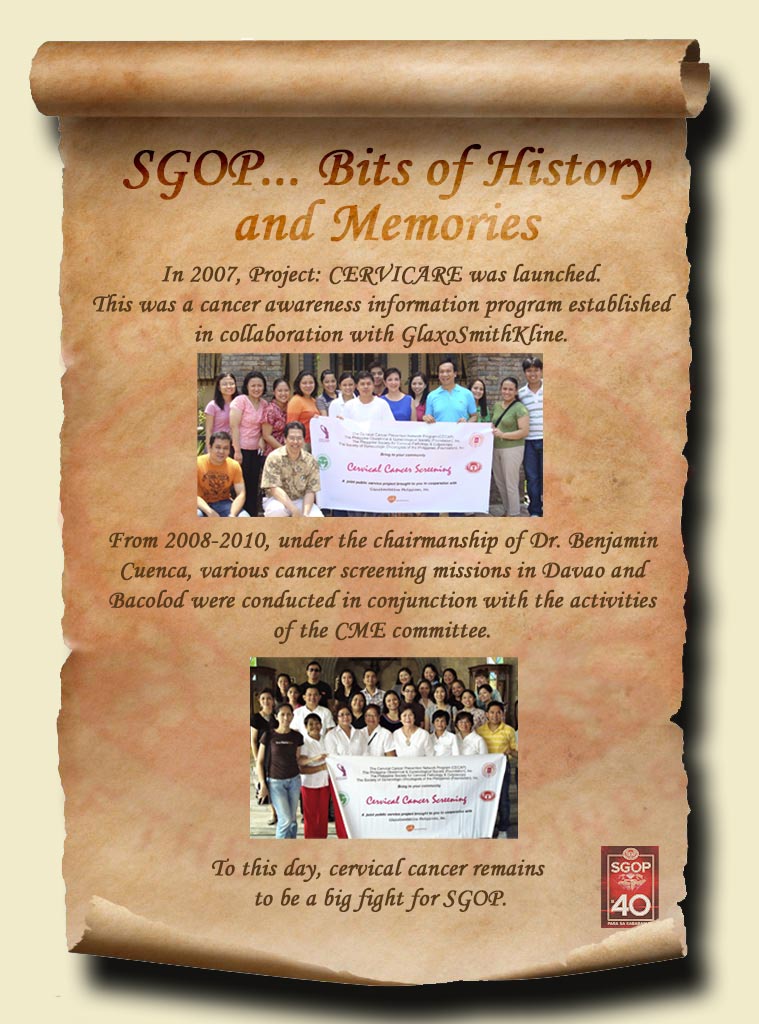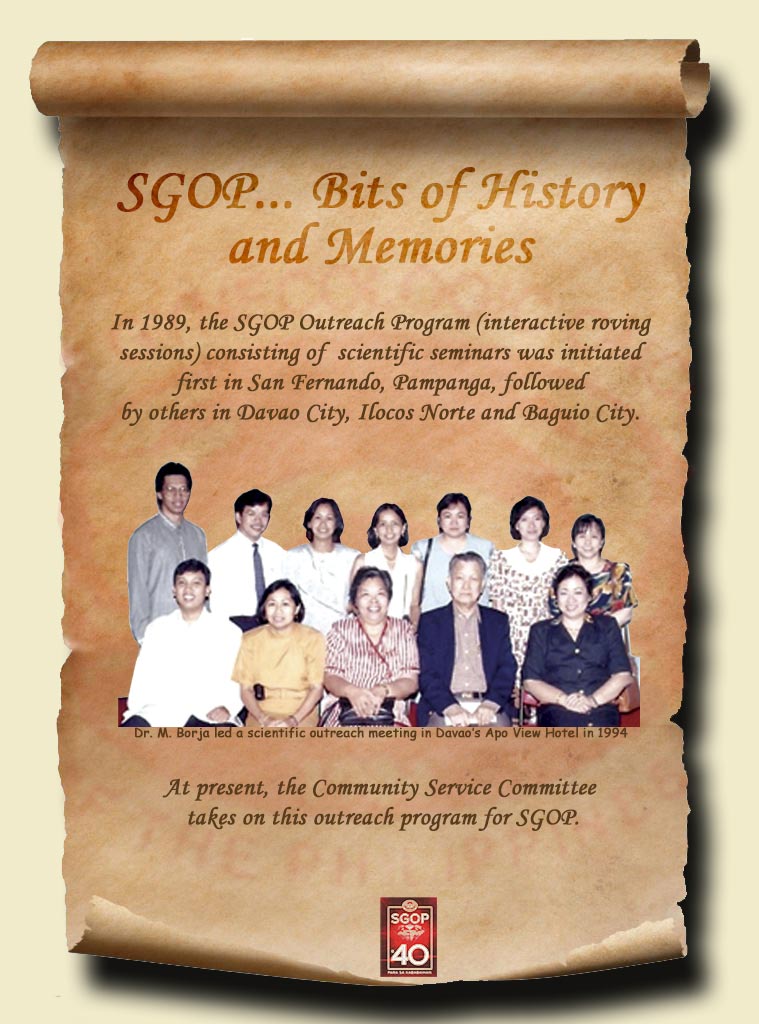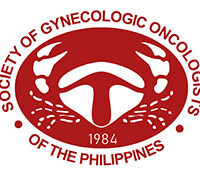
MILESTONES IN SGOP HISTORY
by Dr. Christine Palma
| Before 1945 | gynecologic cancer was managed by the general gynecologists; cervical cancer were treated mostly by radiotherapy and if operable by total hysterectomy |
| 1926 | Intracavitary radium therapy acquired by Dr. Angelo Singian |
| 1940s | Philippine General Hospital Cancer Institute was opened to the public in 1941; Private clinic of Dr. Daniel Ledesma and the University of Santo Tomas acquired X-ray radiotherapy units |
| 1945 | Dr. Constantino P. Manahan returned from training at the Johns Hopkins Hospital and trained the local gynecologists radical surgical procedures including radical hysterectomy and pelvic exenteration |
| 1960s to 1970s | Dr. Luciano SJ Sotto returned from gynecologic malignancy training at the Roswell Park Memorial Institute in 1961. He established the Section of Gynecologic Malignancy at the Philippine General Hospital. The oupatient malignancy clinic, radiation treament protocols, surgical training program of the chief resident on gynecologic oncology (radical hysterectomy, vulvectomy, colostomy, uretero-uretostomy) were established. Graduates of PGH, UST and other institutions took fellowship in gynecologic oncology, cytology and colposcopy in the United States. |
| 1979 | A two-year gynecologic oncology fellowship training program was initiated at the University of the Philippines-Philippine General Hospital. The first graduate was Dr. Elsie Rodriguez-Dancel in 1980. |
| October 30, 1984 | The Society of Gynecologic Oncologists of the Philippines was organized under the leadership of the first SGOP president, Dr. Luciano SJ Sotto. Securities and Exchange Commission approved the Articles of Incorporation on April 30, 1985. By May 1985, there were 19 founding members including gynecologic oncologists, a pathologists, a radiaiton oncologists and a medical oncologists. |
| 1985-1995 | SGOP met annually for business meeting and scientific updates of its members. It organized postgraduate courses and seminars for the obstetrics-gynecology residents and consultants in Metro Manila and some provinces. In 1994, a quarterly “Interhospital Gynecologic Tumor Conference was started with complex cases discussed by a multidisciplinary team. |
| 1996-2007 | The first out-of-town meeting was on April 1997 where a consensus on treatment protocols for the different gynecologic cancerwas accomplished. The prospect of a national tumor registry was presented. Since 1999, the SGOP organized annual conventions that focused on scientific updates relevant to the local general gynecologist and gynecologic oncologists. Foreign luminaries were invited as guest speakers including presidents of the International Gynecologic Cancer Society. In 2001, JRRMMC under Dr. Rey de los Reyes embarked on a second fellowship training program on gynecologic oncology. It was accredited by the Philippine Board of Gynecologic Oncology in 2004. The first graduate was Dr. Judith Cabanela. In 2004, the annual SGOP Interesting Case and Research Paper Contest, regular publication of the Philippine Journal of Gynecologic Oncology and the SGOP Newsletter, annual midyear convention were initiated. The acquisition of an SGOP office was also in 2004. In 2006, the Philippine Society of Cervical Pathology and Colposcopy joined the SGOP’s annual convention In 2007, SGOP was approved by the SEC to be a foundation. |
| 2008-2017 | SGOP became an affiliate society of the Philippine Obstetrical and Gynecological Society and was officially recognized as a subspecialty society under the Philippine Medical Association. The society collaborated closely with Cervical Cancer Prevention Network (CECAP) and Cervicare Program and intensified outreach activities. From 2008 to 2017, the SGOP, the PSCPC and the Philippine Society for the Study of Trophoblastic Disease (PSSTD) have held the joint annual convention with SGOP as lead organization. Awards of Distinction were given to Dr. Luciano SJ Sotto in 2015 and Dr. Genara Limson in 2016 in recognition of their leadership and commitment in establishing gynecologic cancer specialty in the country. |









































